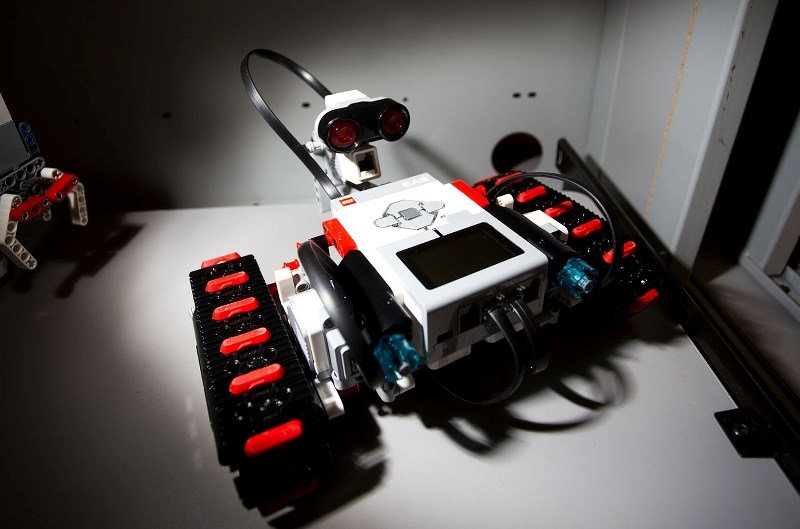Two Paul Kane students hope a new course will help them hunt people down with a Lego tank.
Nathan Tinga and Ben Kong are two of the 24 students enrolled in the new Robotics Design and Programming course at Paul Kane. It's one of a growing number of courses in the St. Albert region that use robots to teach students programming.
The course uses the popular Mindstorms Lego kits to introduce students to programming concepts such as loops and if-then statements, said teacher Jeff Warner. The kits include motors and sensors you can hook to a programmable brick to create a Lego-based robot. The programming software lets students string together premade commands – such as "play this sound" – as a flowchart, creating a visual representation of a program.
Tinga and Kong have been toying with these kits at home for years, making robots that can follow coloured trails and sort coloured bricks. They've even built a tank that can shoot Lego bricks with an elastic band.
"Our hope is by the end of this (course) to take the tank and program it to be able to go hunt someone down," Tinga said.
"The only problem with that is I don't know how to make it follow a moving target."
He clarified that he and Kong were not planning to build one of the killer robots from the Terminator franchise … yet.
"That would be interesting to see how you'd do that," he mused.
Teaching with robots
Paul Kane joins a number of other St. Albert and Sturgeon County schools that have started robotics courses in recent years.
These courses have been around in schools since the 1990s, but only started becoming commonplace in the 2000s with the advent of robotics kits, course instructor Jeff Warner said, adding he taught a course at the University of Alberta with these kits for six years. He estimates that about one in four Edmonton schools now has a course based around the kits.
This week, Warner's students were tasked to make a car that could drive around the room on its own without running into walls. In a few months, they'll know how to make one that can shuffle crates around a simulated warehouse.
There's a lot of value in teaching students how to program computers, Warner said.
"It's the pure expression of logical problem solving," he said, and challenges you to solve open-ended, practical problems – instead of "solve for x," you're solving for, "Why does this program keep crashing?"
Robots are a good platform through which to teach programming because they give programs physical form, Warner said – when the robot falls over, you know you have a problem. That's important, as programming can often be maddeningly abstract.
Using robots in the classroom can help make other abstract concepts concrete, Warner said. Ask most people how to calculate gear ratios, for example, and they might recall learning something about it in high school.
"But if I've given them a very direct problem, like, we need to get this robot up this incline to solve the obstacle course and you can't do it unless you figure out what gear ratio you need, they'll figure it out.
"And by the end of it, now they've really grasped the concept of ratios."
Robotics is a great growth area for jobs right now, covering everything from nanotechnology to space exploration, Warner said. The problem-solving skills you learn from working with robots can also be applied anywhere.
Working with robots is the first step in learning how to program, Tinga said, and is pretty fun.
"It's cool to be able to take your ideas and be able to put them into action."



